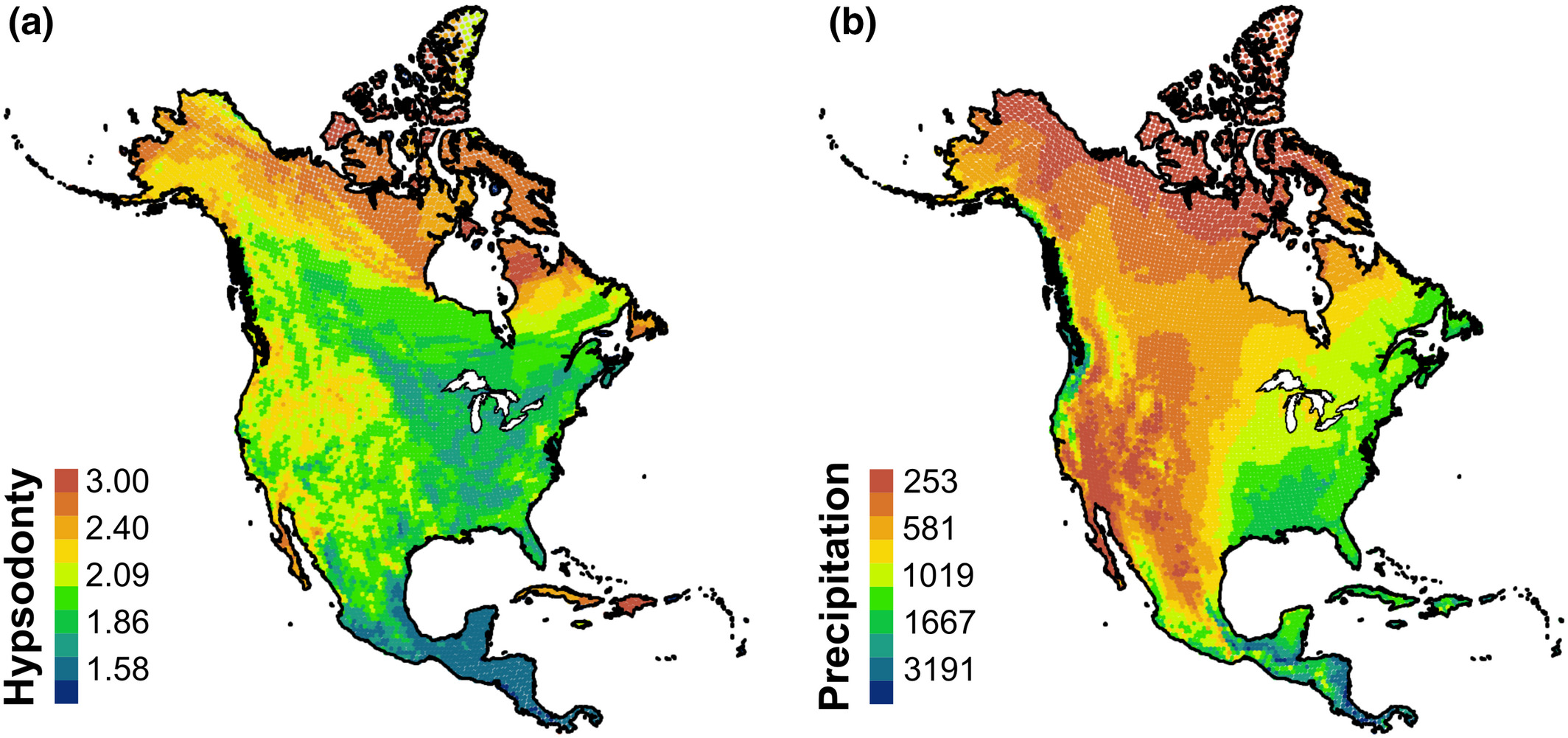..for publishing the a really interesting paper evaluating the performance of ecometric methods. Check it out here.
Abstract: Ecometrics is the study of community‐level functional trait–environment relationships. We use ecometric analyses to estimate paleoenvironment and to investigate community‐level functional changes through time. We evaluate four methods that have been used or have the potential to be used in ecometric analyses for estimating paleoenvironment to determine whether there have been systematic differences in paleoenvironmental estimation due to choice of the estimation method. Specifically, we evaluated linear regression, polynomial regression, nearest neighbor, and maximum‐likelihood methods to explore the predictive ability of the relationship for a well‐known ecometric dataset of mammalian herbivore hypsodonty metrics (molar tooth crown to root height ratio) and annual precipitation. Each method was applied to 43 Pleistocene fossil sites and compared to annual precipitation from global climate models. Sites were categorized as glacial or interglacial, and paleoprecipitation estimates were compared to the appropriate model. Estimation methods produce results that are highly correlated with log precipitation and estimates from the other methods (p < 0.001). Differences between estimated precipitation and observed precipitation are not significantly different across the four methods, but maximum likelihood produces the most accurate estimates of precipitation. When applied to paleontological sites, paleoprecipitation estimates align more closely with glacial global climate models than with interglacial models regardless of the age of the site. Each method has constraints that are important to consider when designing ecometric analyses to avoid misinterpretations when ecometric relationships are applied to the paleontological record. We show interglacial fauna estimates of paleoprecipitation more closely match glacial global climate models. This is likely because of the anthropogenic effects on community reassembly in the Holocene.
